BMW xDrive explained: what is it, issues, and is it worth it?
We explain everything you need to know about BMW's xDrive all-wheel drive system
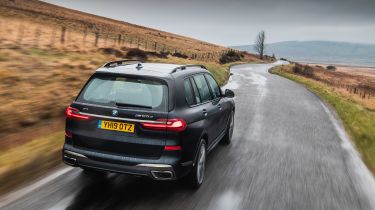
BMW xDrive is the name given to the German brand’s all-wheel drive system. Designed to improve traction, the system can be found today across the majority of BMW’s lineup, spanning from the 1 Series hatchback up to the X7 SUV.
As the car buying market has shifted in favour of SUVs, all-wheel drive cars are more common than ever before. The technology is no longer reserved for 4x4s like Jeeps and Land Rovers – Audi is renowned for its Quattro all-wheel drive system, many Mercedes models feature 4Matic all-wheel drive, while 4Motion is Volkswagen’s take on the technology. BMW sold a handful of all-wheel drive models from the 1980s onwards, but it was only in 2003 that the first xDrive cars hit showrooms. The system works slightly differently to other four-wheel drive alternatives, but it remains one of the most sophisticated and adjustable setups on the market.
 BMW iDrive explained: what is it and how does it work?
BMW iDrive explained: what is it and how does it work?
But what does xDrive do and is it something that’s worth having? We’ll answer both of those questions below, helping you to decide whether your next car purchase should be an all-wheel drive BMW.
What is BMW xDrive and how does it work?
BMW xDrive is an 'all-wheel drive' system, meaning the engine’s power is distributed to all four wheels, rather than just the front or rear pair. However, an onboard computer can adjust how much power is sent to the front wheels and the back wheels – up to 100% in some cases – optimising for efficiency, traction or performance.
While the name is applied across all of BMW’s all-wheel drive cars, the system differs from model to model. In some cars – including the 3 Series, 5 Series and BMW’s M cars – xDrive is set up to send more power to the rear wheels than the front wheels during normal driving. This helps to deliver a sportier driving experience, in keeping with rear-wheel drive BMWs of the past. If a wheel loses grip, the xDrive system can automatically divert power to the front wheels, rear wheels or to an individual wheel, depending on which has the most traction. This means that BMWs with xDrive are less likely to lose traction in bad weather, hard cornering or sudden changes of direction.
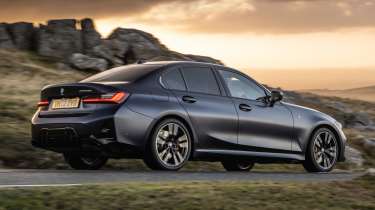
Unlike a majority of other all-wheel drive systems that are operated by hydraulics, xDrive for these rear-wheel-drive-biased cars functions via an electronically controlled multi-disc clutch, which is lightweight and can distribute power quickly when needed. When called upon, this set-up can send 100% of the engine's power to either the front wheels or the rear wheels in just 0.1 seconds. This is continually monitored by BMW's Dynamic Stability Control (DSC) suite of sensors and software.
Things change when it comes to BMW’s front-wheel drive cars. Models such as the 1 Series, 2 Series Gran Coupe, X1 and X2 use a different xDrive system altogether. These cars instead incorporate a Torsen limited-slip differential for the front wheels plus a feed for the rear. During everyday driving on the road, only the front wheels are driven. However, the limited-slip differential is able to redistribute power between the front two wheels to maintain grip and if any slip is detected, up to 50% of power can be sent to the rear axle.
On BMW's performance-focused models, such as the BMW M3 and M4, xDrive does the opposite; it can be set to send a majority of the power to the rear axle, only distributing it to the front axle when there is a loss of traction. This gives the car a more traditional rear-wheel drive feel while helping the car to cope with enormous amounts of power.
Performance BMW models also feature Dynamic Performance Control. This uses the electronically controlled clutch plates of the xDrive system to reduce wheelspin in a given wheel by making the opposite wheel spin faster. This function is operated by the DSC system, which can apply braking force to any spinning wheel until it regains grip.
Do electric BMWs have xDrive?
Some of BMW’s latest electric models can be equipped with xDrive too, although it’s an entirely different system that shares no relation to the xDrive found in its petrol and diesel cars. With no engine or gearbox, models such as the BMW iX and i5 use an individual motor for the front axle and the rear axle, meaning the front and rear wheels are driven entirely independently.
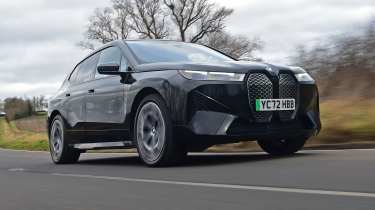
While this brings the same traction improvements as BMW’s combustion-powered xDrive cars, all-wheel drive can have a detrimental effect on EV range compared to an equivalent rear-wheel drive EV, in the same way that all-wheel drive can reduce fuel efficiency in a petrol or diesel car.
Does xDrive improve BMW’s cars?
That was a lot of technical jargon, but the real question is does xDrive make a difference? For most drivers, the answer will be yes – xDrive will improve traction in slippery conditions without detracting from the enjoyable driving experience that BMW built its reputation on.
The downside is that xDrive may make the car slightly less fuel efficient, as driving all four wheels generally uses more fuel. For electric BMW models with xDrive, range is likely to be marginally worse than an equivalent single-motor car. Some enthusiasts may find models with xDrive slightly less playful than their rear-wheel drive equivalents when driven quickly, although the latest BMW M cars with xDrive are arguably even better than their rear-wheel drive counterparts.
Are there any xDrive issues to look out for?
As BMWs equipped with xDrive have an extra pair of driven wheels, the cost of servicing may attract a slight premium over maintaining a regular rear-wheel drive model due to additional servicing and inspection requirements.
As with many other all-wheel drive setups, xDrive is sensitive to tyres and tyre pressures. It’s important to make sure you have the same tyres fitted to all four wheels and that the pressures are set to the manufacturer’s recommended values, otherwise the system may not function correctly.
Another downside of all-wheel drive is a reduction in efficiency; as xDrive pushes power to all four wheels permanently and adds weight, it will inevitably use more fuel than a rear-wheel drive model. Likewise, an electric BMW with xDrive will not be as efficient as a single-motor model.
Is BMW xDrive worth it?
If you're thinking of buying a new car, where you live, how you use your car and the weather you regularly encounter on journeys is likely to affect whether you want a car with all-wheel drive. After a flurry of snow or a downpour of rain, roads can quickly become treacherous. Often a two-wheel drive car on winter tyres would actually give you more grip, but all-wheel drive systems such as xDrive will provide you with helpful extra traction in bad weather.
For those of you that want to do off-roading, then BMW's 'X' badged SUVs all feature xDrive and offer impressive performance both on and off-road – although something like a Land Rover Defender or Toyota Land Cruiser will probably be better suited to tackling rough terrain.
Cost is a key factor to consider – BMW models fitted with xDrive are more expensive than their front or rear-wheel drive siblings. xDrive is sometimes only available for higher powered models, too – for example, to get a BMW 3 Series with xDrive, you have to opt for the top-spec M340i. That won’t be an issue for some buyers, but it’s worth weighing up how important all-wheel drive is for you relative to the added cost.
The BMW 3 Series range has been the benchmark in the executive car market for the past three decades, and the latest model is one of our favourite saloon cars. Concerns that the addition of xDrive would diminish its ability have proven to be unfounded. While the addition of all-wheel drive has marginally affected the driving dynamics compared with a rear-wheel drive model, the difference during normal day-to-day driving isn’t really noticeable.
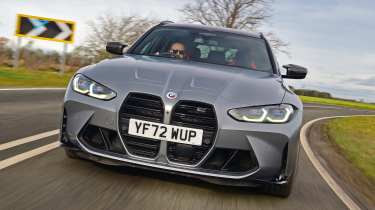
In fact, BMW has so much confidence in the driving dynamics of its xDrive system that the M3 saloon and M4 coupe are now xDrive-only for the first time. A 'drift mode' is included, allowing the car to send its considerable power solely to the rear wheels at the press of a button. This means that despite their latest lean towards all-wheel drive, the rear-drive DNA of BMWs still lives on in some form.
Frequently Asked Questions
xDrive is the name of BMW’s all-wheel drive system. Any BMW model with an xDrive badge will send its power to all four wheels, rather than just the front or rear, improving traction.
Do you want to know more about BMW xDrive models? Why not read our in-depth reviews of the X5 SUV and the 5 Series saloon.
Recommended
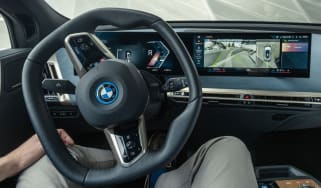
BMW Parking Assistant and Park Assistant Plus explained
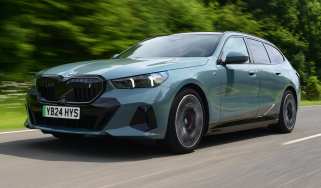
Big BMW updates bring new X3 diesel engine, longer range for i5 and more
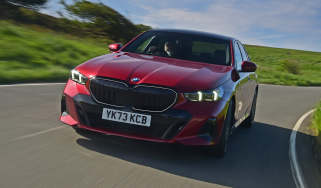
BMW recalled more cars than any other brand in 2024
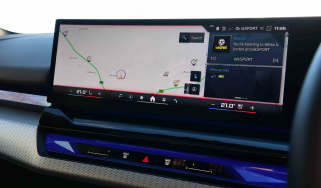
BMW iDrive explained: what is it and how does it work?
Most Popular
Tips & advice

Car dashboard warning lights: what does each symbol mean?

Electric car charging stations: public networks, charger types, apps and maps





